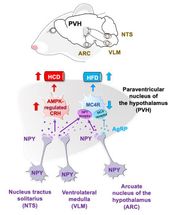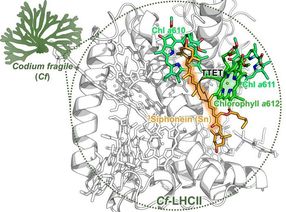Evolution of a novel organelle in insects
Symbiotic bacterium has integrated into aphids using a mechanism common to mitochondria and chloroplasts
Advertisement
A Toyohashi Tech researcher in cooperation with researchers at RIKEN, Iwate Medical University, Tokyo Institute of Technology, and the National Institute of Genetics, has revealed that aphids synthesize a protein from a gene laterally acquired from bacteria, and the produced protein is transported to an obligate intracellular bacterial symbiont. This is the first report of integration between animals and bacteria to the extent of ‘organellogenesis’. This finding will lead to the development of innovative biotechnologies, including the fusion of distantly related organisms, and will enable highly selective pest control.
Mitochondria and chloroplasts are descendants of bacteria that were engulfed by common ancestors of all eukaryotes and plants, respectively. During their evolution, many genes were transferred from ancestral organelles and other bacteria to the host genome. This process required incorporating intact genes into the host genome, acquiring the expression signals that enable their transcription in eukaryotic hosts, and evolving a targeting system to transport and import their protein products into the endosymbiotic organelles. The advent of this protein-targeting machinery is commonly assumed to be the most crucial step, at which an endosymbiont becomes an organelle.
Although bacterial lineages have repeatedly evolved intimate symbioses with eukaryotic hosts, the establishment of the protein translocation system has been shown only in the cases of bona fide organelles and a symbiosis in an amoeba. Here, Atsushi Nakabachi at Toyohashi Tech and his colleagues report this type of evolution in Animalia. Aphids, sap-sucking insects known as agricultural pests, harbor the obligate mutualistic symbiont, Buchnera aphidicola (Gammaproteobacteria), within specialized cells called bacteriocytes. Buchnera provides nutrients to the host aphids and has been transmitted through host generations for more than 100 million years. The present study revealed that (i) protein is synthesized from the aphid-encoded RlpA4 gene that was laterally acquired from a bacterium, (ii) the RlpA4 protein is synthesized specifically in the bacteriocyte, and (iii) the synthesized protein is localized in Buchnera cells, indicating that a translocation system has evolved to target the RlpA4 protein to Buchnera. These results demonstrate that the intimate aphid-Buchnera symbiosis is achieved using a mechanism that is common to the evolution of organelles, mitochondria and chloroplasts. This finding will lead to the development of innovative biotechnologies, including the fusion of distantly related organisms, and will enable highly selective pest control.
Original publication
Atsushi Nakabachi, Kinji Ishida, Yuichi Hongoh, Moriya Ohkuma, Shin-ya Miyagishima; "Aphid Gene of Bacterial Origin Encodes a Protein Transported to an Obligate Endosymbiont."; Current Biology 2014.


























































